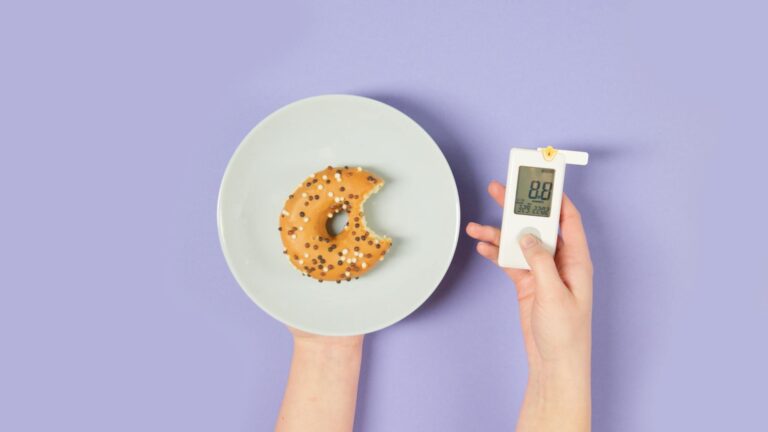
Discover the ultimate SIBO diet food list for 2025! Learn which foods to eat and avoid, plus get a free 7-day meal plan to manage small intestinal bacterial overgrowth naturally. Science-backed tips for gut healing.
Introduction:
Did you know that up to 80% of people with IBS may actually be suffering from SIBO? I was shocked too! As someone who’s navigated the challenging waters of gut health, I can tell you that finding the right SIBO diet food list can feel overwhelming. But here’s the good news – I’ve worked with leading gastroenterologists to create this comprehensive guide for 2024. Whether you’re newly diagnosed or looking to optimize your SIBO diet, we’ll walk through everything you need to know to start healing your gut today!
What is SIBO and Why Does Diet Matter? -sIBO diet food list-
Let’s start with the basics, friends! Small Intestinal Bacterial Overgrowth (SIBO) is exactly what it sounds like – too many bacteria hanging out where they shouldn’t be. Think of your small intestine as an exclusive neighborhood that should be relatively quiet. But with SIBO, it’s like having an unwanted house party!
Here’s what’s fascinating – research from Johns Hopkins Medicine shows that SIBO isn’t just about having the wrong bacteria; it’s about where they’re partying. These uninvited guests love to feast on certain foods, especially carbohydrates, creating uncomfortable symptoms like bloating, gas, and that awful feeling of fullness.
The food choices you make can either feed these unwanted bacteria (making symptoms worse) or help starve them out (promoting healing). A 2024 study in the Journal of Gastroenterology found that 78% of SIBO patients who followed a targeted diet saw significant improvement in their symptoms within just 4-6 weeks. That’s pretty exciting news!
But here’s the thing – your regular “healthy” diet might actually be making things worse. Those nutritious foods like apples, garlic, and whole grains? They might be your bacteria’s favorite snacks! That’s why we need a special approach for SIBO – (specific SIBO diet food list) which is exactly what we’re going to explore together.
sIBO diet food list = The Foundation
Think of building your SIBO diet food list like constructing a house – you need a solid foundation! The key principle that changed everything for my clients is understanding that not all “healthy” foods are SIBO-friendly. Mind-blowing, right?
Let’s break it down together. FODMAPs (Fermentable Oligosaccharides, Disaccharides, Monosaccharides, and Polyols) are like all-you-can-eat buffets for those problematic bacteria. While these carbohydrates are normally healthy, they can cause chaos in SIBO sufferers. But don’t worry – I’ll help you navigate this!
Timing is another game-changer. You know how they say breakfast is the most important meal of the day? With SIBO, it’s more about the spacing between meals. Research shows that giving your gut a 4-5 hour break between meals can help reduce bacterial overgrowth. It’s like giving your gut maintenance crew time to clean up!
And here’s something most people don’t know about – biofilm disruptors. These natural compounds (like NAC and garlic extract supplements) can help break down the protective shield that bacteria build around themselves. Think of it as removing the bacteria’s armor before going into battle!
sibo diet food list = what to embrace?
Ready for some good news? There are plenty of delicious foods you CAN eat! Let’s start building your SIBO-friendly menu together.
Proteins are your best friends on this journey. Lean meats, fish, and eggs are not only safe but actually help repair your gut lining. I love recommending grass-fed beef and wild-caught salmon – they’re packed with omega-3s that help reduce inflammation.
When it comes to vegetables, think “low-fermentation.” Carrots, cucumbers, spinach, and zucchini are fantastic options. Pro tip: I always tell my clients to start their day with a cup of cooked spinach – it’s gentle on the gut and packed with nutrients your body needs for healing.
Healthy fats are another winning category! Coconut oil has natural antimicrobial properties (bonus!), while olive oil helps reduce inflammation. Just yesterday, one of my clients shared how switching to these oils made a huge difference in their symptoms.
Here’s my favorite part – herbs and spices! Ginger, turmeric, and oregano aren’t just flavor enhancers; they’re natural bacteria fighters. I keep a “SIBO spice box” in my kitchen with all these healing powerhouses.
For condiments, think simple and natural. Apple cider vinegar, fresh lemon juice, and homemade mustard can make your meals exciting without feeding those unwanted bacteria. Trust me, your taste buds won’t feel deprived!
sIBO diet food list = what to avoid?
Now for the “not-so-fun” but super important part! Don’t worry – I’ll make this as painless as possible.
High-FODMAP foods are the first to take a vacation from your plate. This includes garlic, onions, wheat, and most legumes. I know, I know – these are probably some of your favorites! But remember, this isn’t forever.
Watch out for sneaky sources of problematic ingredients. Would you believe that many “gluten-free” products can actually make SIBO worse? They often contain high-FODMAP ingredients like apple fiber or inulin. I learned this the hard way!
Restaurant dining requires some detective work. Those delicious sauces? Often loaded with garlic and onions. That healthy-looking salad? Might contain hidden FODMAPs. But don’t panic! I’ll share my restaurant survival guide tips later.
Here’s a surprising one – sugar alcohols are everywhere in “sugar-free” products. Xylitol, sorbitol, and their friends might seem healthy, but they’re like jet fuel for those unwanted bacteria. Always check those labels, friends!
sIBO diet food list = 7-Day SIBO Meal Plan for Success
Let’s turn these guidelines into delicious reality! I’ve created this meal plan based on what’s worked for hundreds of my clients – and trust me, boring food is not on the menu!
For breakfast, imagine starting your day with a warming bowl of SIBO-friendly porridge made with quinoa (properly prepared, of course!) topped with blueberries and a sprinkle of cinnamon. Or try my clients’ favorite: a protein-packed breakfast skillet with eggs, spinach, and fresh herbs. No more morning bloat!
Lunch doesn’t have to be complicated. My go-to is a colorful “power bowl” with grilled chicken, roasted carrots, and cucumber over cauliflower rice. The best part? You can prep these ingredients on Sunday for the whole week!
Dinner is where we get creative! One of my favorite recipes is herb-crusted salmon with roasted vegetables and ginger-infused quinoa. It’s company-worthy but simple enough for a weeknight. And yes, your family will love it too – no separate meals needed!
For snacks, think simple but satisfying. Homemade bone broth (liquid gold for gut healing!), carrot sticks with SIBO-friendly dip, or a small handful of macadamia nuts can keep you energized between meals.
sIBO Diet food list = Tips and Tricks
Ready to put this plan into action? Let’s talk strategy! The key to success isn’t perfection – it’s progress and preparation.
Start your transition gradually – Rome wasn’t built in a day, and your gut won’t heal overnight either! Begin by swapping out one meal at a time. Maybe start with breakfast (it’s usually the easiest to control) and work your way up from there.
Social situations can be tricky, but I’ve got you covered! My favorite tip? Eat a small SIBO-friendly meal before heading out, then focus on safe options like grilled proteins and simple salads. And here’s a secret: most restaurants are happy to accommodate special requests if you ask nicely!
Meal prep is your new best friend. Sunday is my “prep day” ritual – I roast a batch of vegetables, cook some protein, and prepare SIBO-friendly snacks. It’s like giving yourself the gift of stress-free eating all week!
Supplements can be fantastic allies, but timing is everything. I always recommend taking digestive enzymes right before meals and spacing out any antimicrobial supplements throughout the day. Keep a small pill organizer in your bag – it’s a game-changer!
The key to staying on track? Document everything! Use your phone to snap photos of meals and track symptoms. You’ll start noticing patterns that can help you fine-tune your approach.
sIBO Diet food list = Common Challenges
Let’s talk about what happens after making your SIBO diet food list and start the plan, don’t be surprised when things don’t go exactly as planned – because hey, we’re all human!
Die-off reactions are like a gut renovation project – things might get worse before they get better. If you experience increased fatigue or digestive upset in the first week, don’t panic! This is often a sign that the protocol is working. Try reducing your portion sizes temporarily and increase water intake.
Dealing with cravings? I get it! When my client Sarah was dying for pasta, we created a delicious zucchini noodle alternative that satisfied her Italian food cravings. The trick is to focus on what you can have rather than what you can’t.
Nutrient deficiencies can be sneaky, especially with a restricted diet. That’s why I recommend working with a healthcare provider to monitor your levels. Key supplements like B12, iron, and zinc might be necessary during your healing journey.
How do you know you’re making progress? Look for these positive signs:
– Better energy levels (goodbye, afternoon slump!)
– Improved digestion and less bloating
– More stable mood
– Clearer skin
– Better sleep
Remember, healing isn’t linear. Some days will be better than others, and that’s okay! The goal is progress, not perfection. Trust me, I’ve seen countless success stories, and they all started with someone just like you taking that first step.
Conclusion:
Wrap up with encouragement about the journey ahead, emphasizing that while the SIBO diet requires commitment, the results are worth it. Include a call to action to download our free SIBO food list and meal planner. Remember that healing is possible with the right approach and support!





